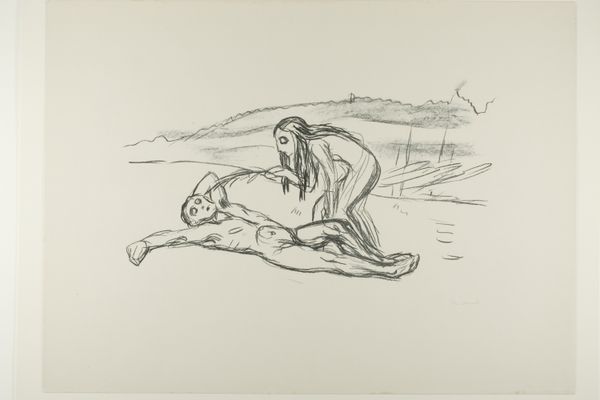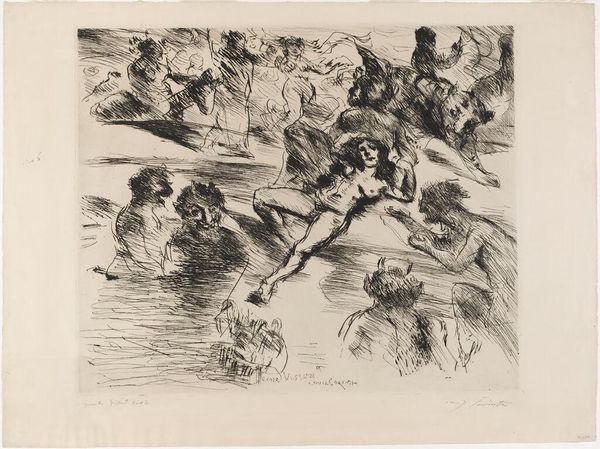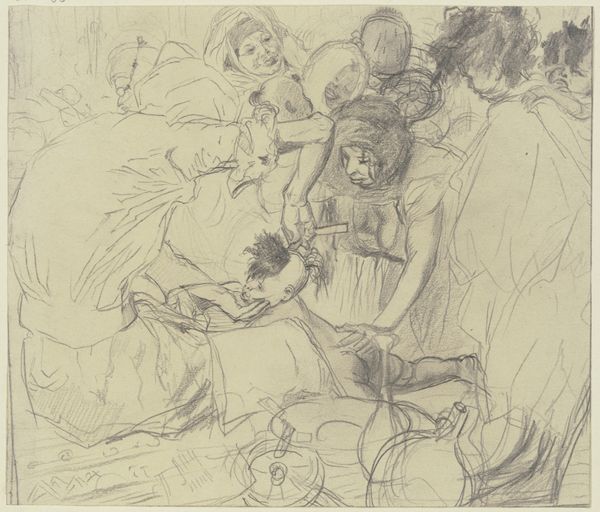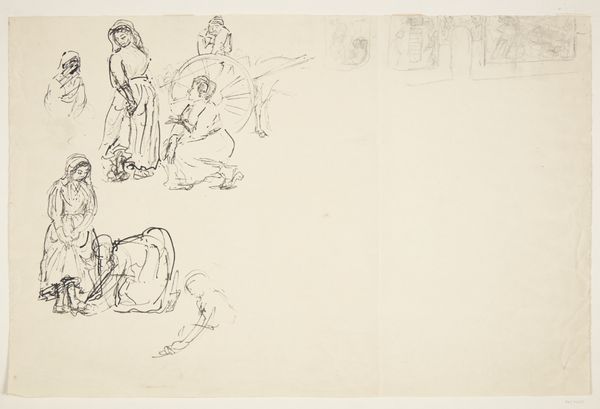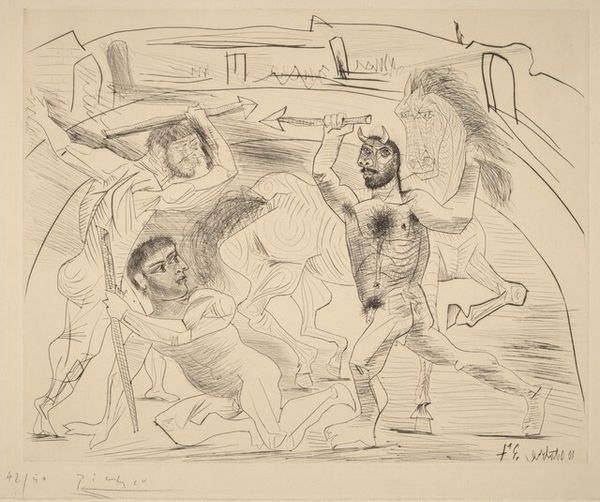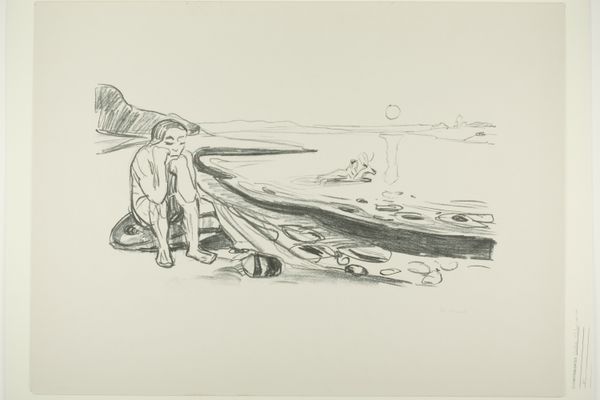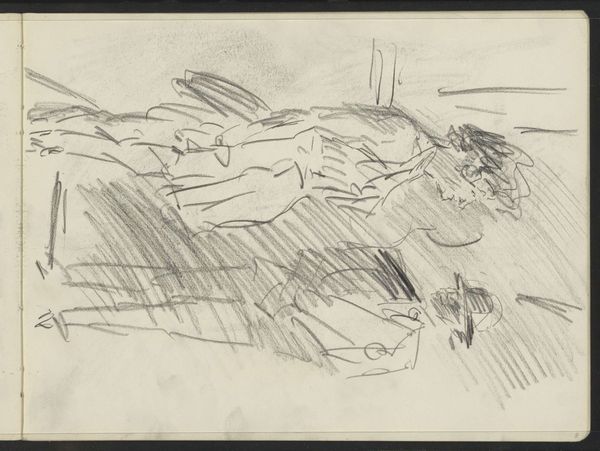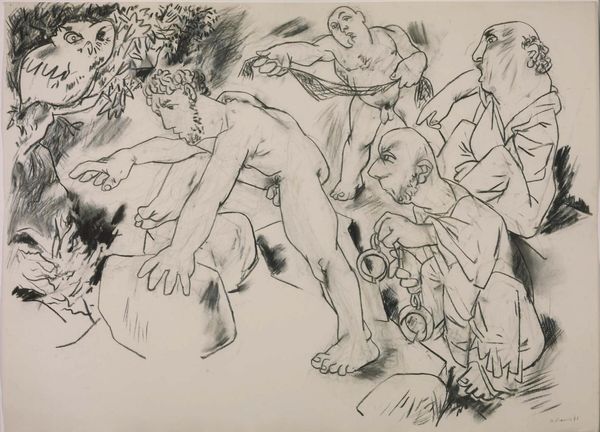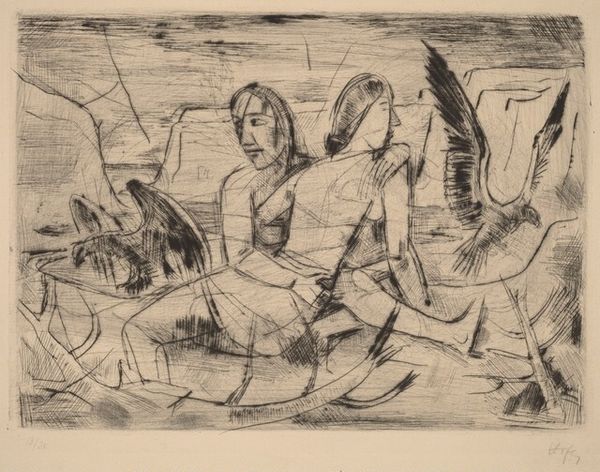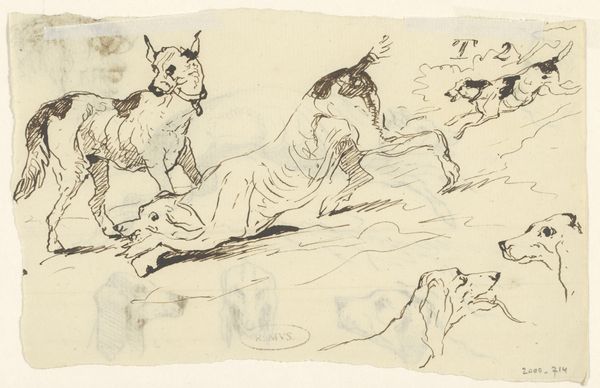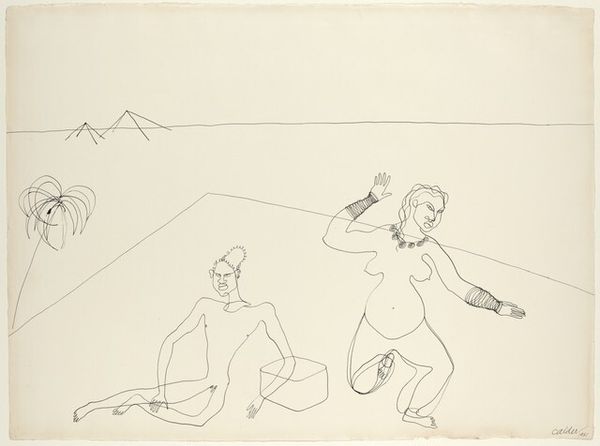
drawing, lithograph, print, paper, pencil
#
drawing
#
ink drawing
#
narrative-art
#
lithograph
# print
#
pen sketch
#
pencil sketch
#
figuration
#
paper
#
pencil
#
expressionism
#
sketchbook drawing
Dimensions: 286 × 502 mm (image); 481 × 651 mm sheet)
Copyright: Public Domain
Curator: Looking at this, I’m instantly transported to a bizarre and somewhat terrifying dreamscape. It’s scratchy, raw, like a nightmare etched onto paper. Editor: Indeed. What we have here is "Alpha's Death," a lithograph and pencil drawing on paper, created by Edvard Munch around 1908 or 1909, now residing here at The Art Institute of Chicago. But far from 'dreams,' perhaps this offers more socio-historical anxieties? Curator: You know, Edvard, he really got the mood here with this. All this expressive sketchiness brings out this…feeling of some chaotic end-time narrative. Editor: Certainly, the lithographic process allows for a replication of textured mark-making one usually finds in a raw sketch or an intimate drawing. We've got a figure, Alpha I presume, facing off with this menacing creature. A death of an alpha or the loss of authority? Curator: Loss of authority, chaos--absolutely, yes! With Munch there’s so much interiority. The scene pulses with the tension that comes from the subconscious—that feeling when control slips. Notice all the vaguely human figures in the background; there is a disturbing group that seem to be almost mocking this figure’s last moment. Editor: These might embody society’s silent approval, perhaps, complicit spectators in a system designed to uphold the oppressor while conveniently ignoring the oppressed and their own self-destructive nature. Is Munch commenting on collective culpability, or even moral degradation? Curator: Gosh, perhaps. But what grabs me is also the medium. A lithograph drawing seems… delicate, compared to what’s happening within the narrative of struggle. How the roughness interacts with such detail really holds attention! Editor: Munch’s expressionistic use of line heightens that inherent conflict. Each etching and scratch contributes to an overarching tension between the personal and social. The drawing encapsulates, literally and figuratively, historical dynamics we’ve come to engage with still today. Curator: Agreed. I see that now. The work becomes this potent symbol. Well, it’s always great to look at how things feel, but it’s something else to find out that the thing is feeling about everyone else! Editor: Precisely. By juxtaposing art history with contemporary theory, we encourage new dialogue, fostering deeper explorations of ourselves.
Comments
No comments
Be the first to comment and join the conversation on the ultimate creative platform.
